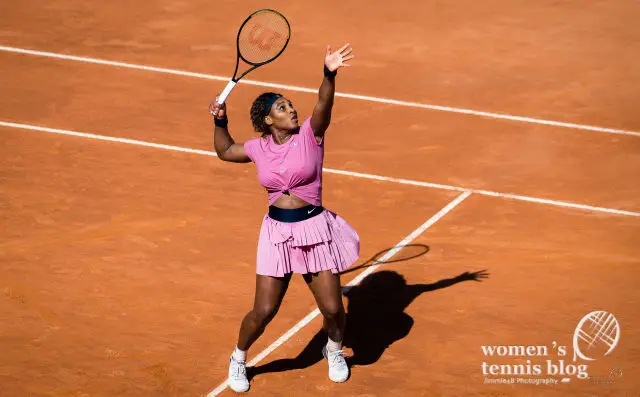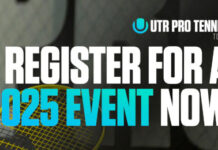Tennis coach Marcin Bieniek, founder of Enjoy Tennis Blog, explains the elements that make a successful overhead shot. Marcin is currently looking for new career opportunities, so if you are interested in cooperation, you can contact him via his personal website.
Modern tennis has changed a lot and even on faster surfaces players try to use groundstrokes to build and finish points. They prefer staying on the baseline to coming to the net because they feel more comfortable with hitting the ball after the bounce. However, coming to the net is still a big opportunity to win many crucial points and one of the strokes that players need to possess is a high-quality overhead.
Overhead is a shot that can make the audience jump out of their seats. The ability to take the ball out of the air with overhead motion creates an easy opportunity to generate a lot of power that sends the ball out of the court after the bounce. Pete Sampras was the man who used this shot spectacularly well and he was using both legs to jump in the air to make it even more appealing.

Smash looks quite easy to execute. This stroke is similar to the serve and it is hit mostly from close distance to the net, so players are supposed to win almost all the balls while answering the lob. However, if we have experience or we take a look at competitive matches of other players, we quickly understand that it is not as easy as it looks to convert every overhead into a won point. To deal effectively with high balls at the net, players have to put in conscious work into technical, tactical and physical aspects of practicing an overhead.
To make your opponent forget about considering lob as a shot to use against you, you are supposed to:
Have high-quality technique
As with any stroke in tennis, technique can help with proper execution. The better the technical habits, the easier it is to control the ball and achieve expected results. Make sure you have continental grip, abbreviated backswing and that you are sideways before you hit the ball to guarantee optimal preparation.
Jump back
A good opponent will know that lob has to be played behind the service line to force the rival to have problems with quality smash execution. Without a doubt this type of lob can be a challenge for net player, but it doesn’t mean that challenging balls can’t be finished with a more conscious work. While dealing with deeper lobs, it is important to use cross-over steps while moving back and to use back leg to jump to the ball. This coordinated movement opens the chance to hit the ball hard and still finish the point on your own terms.
Come back to the net
An overhead is not always the last shot in the rally, so tennis players should remember what to do right after playing an overhead. If the lob didn’t push you close to the baseline, you should always sprint to the net to put pressure on the rival and intercept a possible response. The biggest mistake that players make is the situation when they stay right behind the service line after the smash and try to win the point. This no-man’s land puts opponents in favor and there is a big chance that even after a good overhead, the rival will be the one who wins the point.
If you are playing at a lower level or you compete in doubles, then you definitely have to work on your overhead. There are subtle nuances that you should be aware of to make sure that you capitalize on opportunities to take the ball out of the air while getting the ball over your head. Make sure you consciously improve technical, tactical and physical factors and you will add another weapon to your repertoire of solid strokes.
Visit our Tennis Tips page for a lot more articles by tennis coaches. There you can learn how to improve specific shots and skills, handle pressure, adapt your game to all surfaces and weather conditions, choose the most appropriate tennis racquet, best strings, and much more.




